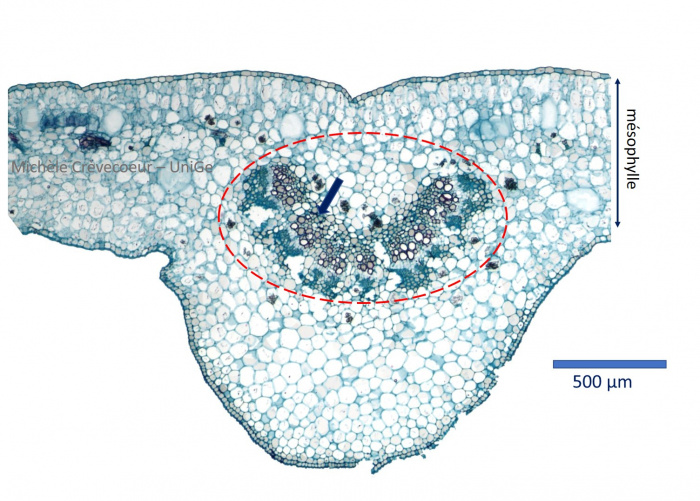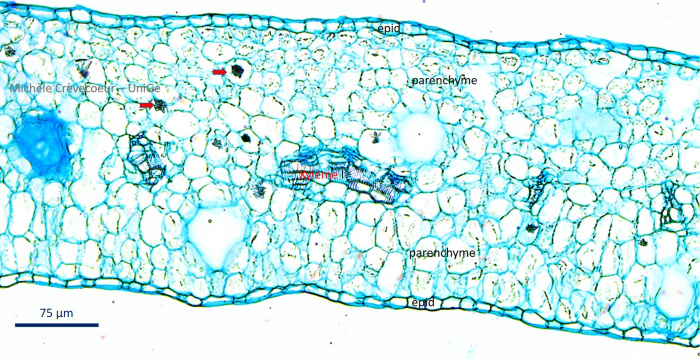Cross sections in a leaf of Pereskia grandifolia
Pereskia grandifolia commonly called pereskia is a cactus, in cactaceae family, native to Brazil. It is also called « rose cactus » due to its numerous pink flowers that are similar to flowers of rosa.
This succulent plant forms thorny shrubs that may reach several meters in height. Pereskia is the only genus of cacti with persistent non – succulent leaves. However, in particular conditions, for example during a drought or during a rest period it will lose its leaves. The leaves are thick and fleshy with prominent veins on the lower face and they have an elliptic – ovate to obovate – lanceolate form. The leaves are frequently used for medicinal properties (cholesterol) or as culinary plant (salad or cooked). Pereskia is also used as ornamental plant.
Microphotographs of a cross section in a portion of leaf fixed with FAA and embedded in paraffin. The section has been stained with toluidine blue. The first micrograph illustrates a portion of the section with the main vein (red dotted lines) with xylem (blue arrow) toward the adaxial face.

Microphotograph of the section in the lamina: epidermis of both faces have a thin cuticle. The mesophyll is occupied by a homogeneous parenchyma in which cells (idioblasts) contain calcium oxalate crystal (red arrows). Xylem sectioned longitudinally is observed (xylem).
